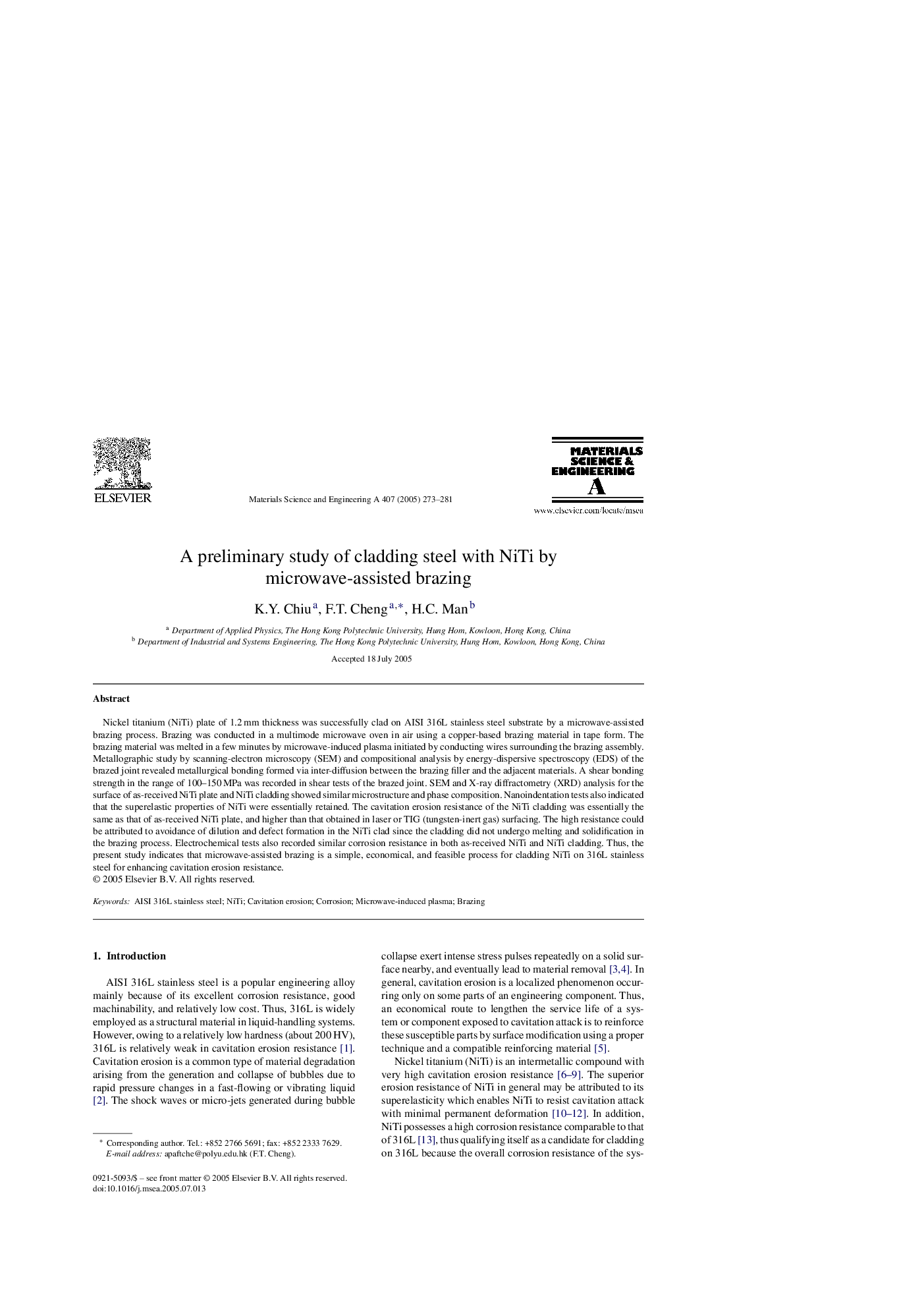| Article ID | Journal | Published Year | Pages | File Type |
|---|---|---|---|---|
| 9795830 | Materials Science and Engineering: A | 2005 | 9 Pages |
Abstract
Nickel titanium (NiTi) plate of 1.2Â mm thickness was successfully clad on AISI 316L stainless steel substrate by a microwave-assisted brazing process. Brazing was conducted in a multimode microwave oven in air using a copper-based brazing material in tape form. The brazing material was melted in a few minutes by microwave-induced plasma initiated by conducting wires surrounding the brazing assembly. Metallographic study by scanning-electron microscopy (SEM) and compositional analysis by energy-dispersive spectroscopy (EDS) of the brazed joint revealed metallurgical bonding formed via inter-diffusion between the brazing filler and the adjacent materials. A shear bonding strength in the range of 100-150Â MPa was recorded in shear tests of the brazed joint. SEM and X-ray diffractometry (XRD) analysis for the surface of as-received NiTi plate and NiTi cladding showed similar microstructure and phase composition. Nanoindentation tests also indicated that the superelastic properties of NiTi were essentially retained. The cavitation erosion resistance of the NiTi cladding was essentially the same as that of as-received NiTi plate, and higher than that obtained in laser or TIG (tungsten-inert gas) surfacing. The high resistance could be attributed to avoidance of dilution and defect formation in the NiTi clad since the cladding did not undergo melting and solidification in the brazing process. Electrochemical tests also recorded similar corrosion resistance in both as-received NiTi and NiTi cladding. Thus, the present study indicates that microwave-assisted brazing is a simple, economical, and feasible process for cladding NiTi on 316L stainless steel for enhancing cavitation erosion resistance.
Related Topics
Physical Sciences and Engineering
Materials Science
Materials Science (General)
Authors
K.Y. Chiu, F.T. Cheng, H.C. Man,
